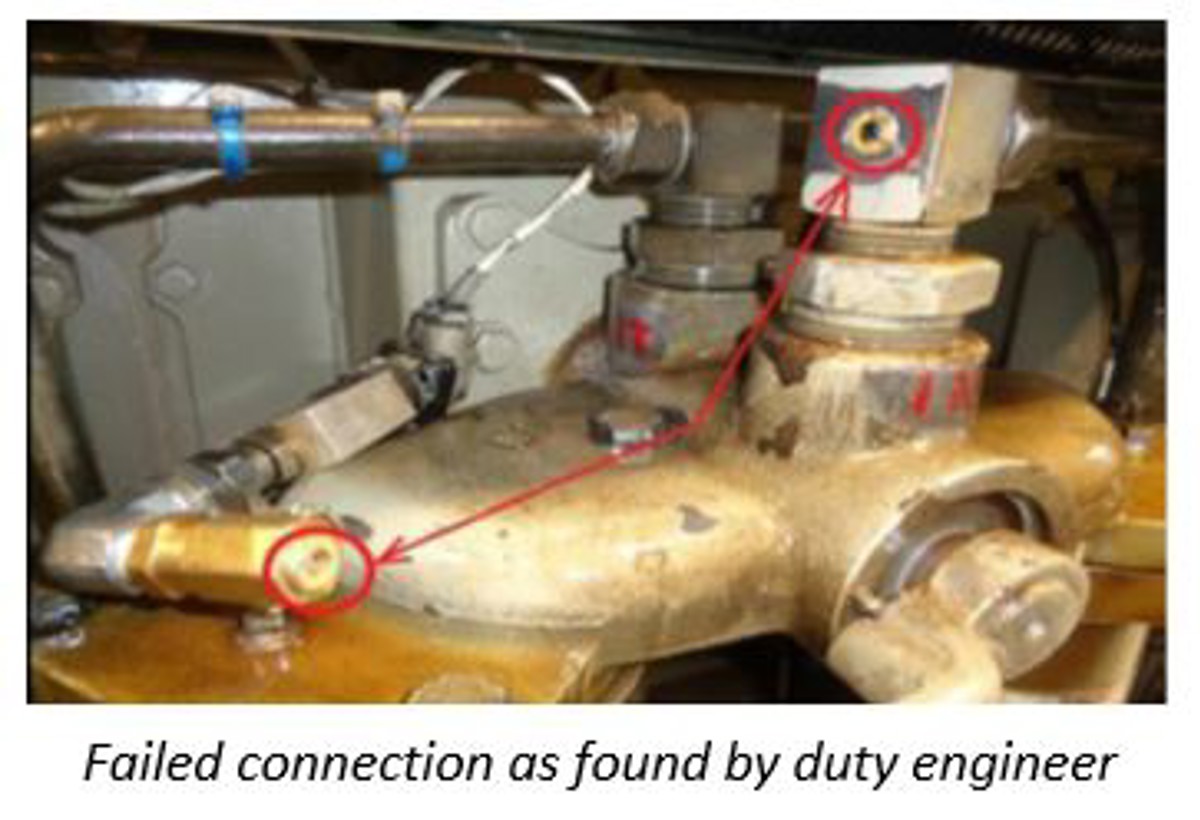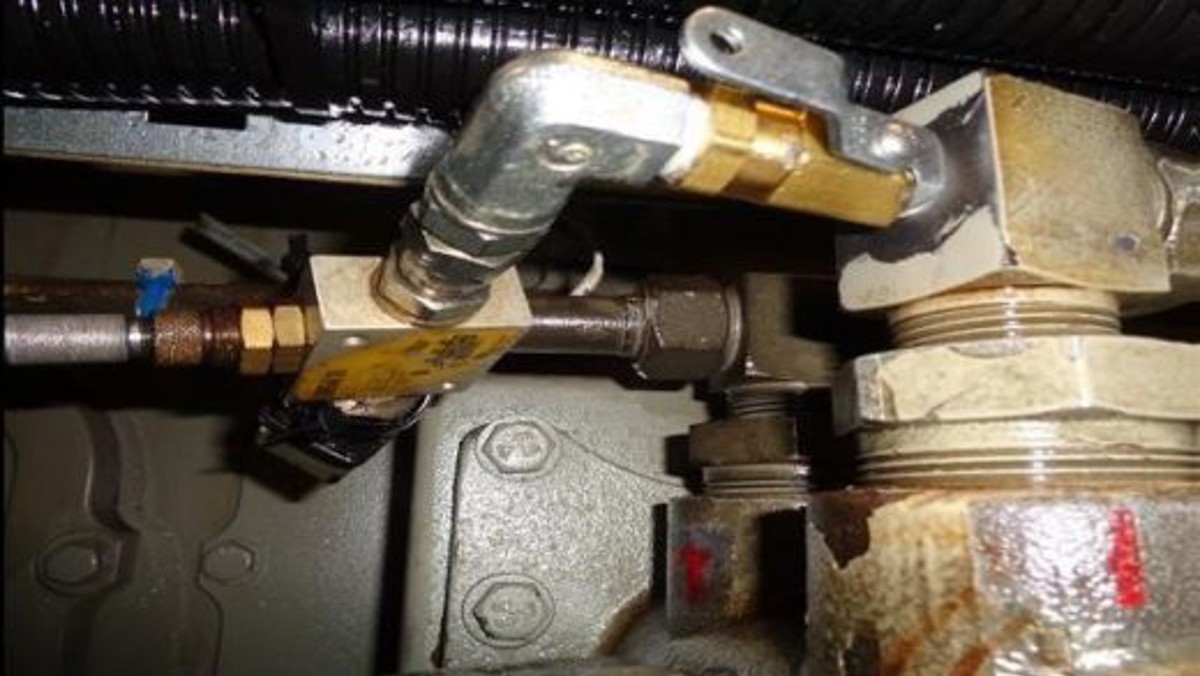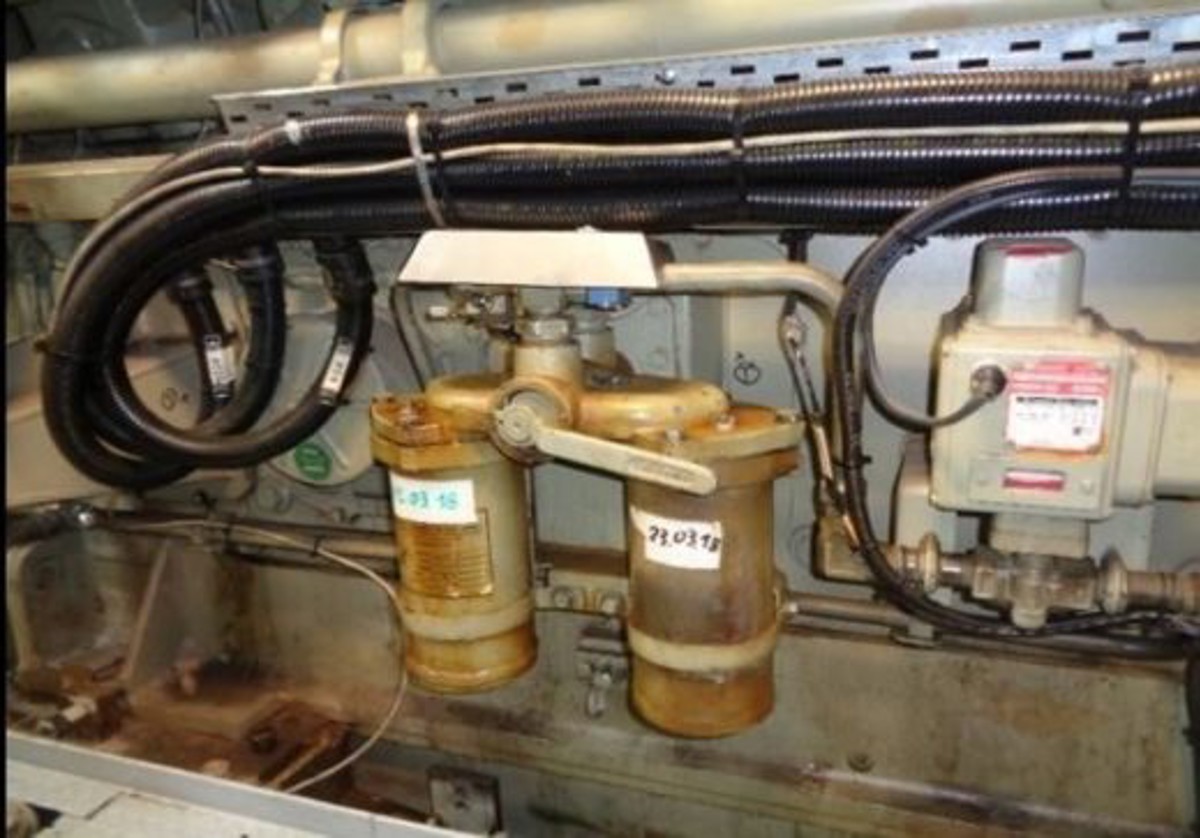Fuel spray fire
- Safety Flash
- Published on 20 July 2018
- Generated on 12 December 2025
- IMCA SF 15/18
- 2 minute read
Jump to:
The Marine Safety Forum (MSF) have released Safety Alert 18-16, in which a vessel experienced machinery failure which could have resulted in a far more serious outcome.
What happened?
The vessel had been forced to stop operations due to foggy weather. A high-level alarm was sounded on the forward bilge. Investigation of the alarm showed that the forward bilge was full of fuel oil; the fuel was spraying from the port main engine onto the engine room plates.

What were the causes?
Upon further inspection, it was found that the fuel oil secondary filter differential pressure sensor isolating valve on the port main engine had cracked, and this was causing the fuel spray. Approximately 1m3 of fuel was lost.
- The failure of the valve was caused by a combination of engine vibrations and the weight of assembly acting on the male threaded section of the brass valve.
- The pipe arrangement had been altered from the original set up because of pressure fluctuations – this interfered with the proper functioning of the sensor; the MSF notes that the long-term effect of this alteration was perhaps not properly assessed by the manufacturer prior to this alteration.
What actions were taken?
- Replacement of the brass valve fitting with s stainless-steel equivalent.
- Addition of a deflector plate above the valve to prevent future failure and prevent fuel spray from reaching the hot engine.
What lessons were learned?
- Always apply the management of change (MoC) process when implementing changes on board.
- Discussions of the long and short-term consequences of any changes should be had, assessing any potential risks.
The full safety alert can be found on the MSF website.
Related Safety Flashes
-
IMCA SF 16/17
27 June 2017
-
-
IMCA SF 08/15
2 June 2015
IMCA Safety Flashes summarise key safety matters and incidents, allowing lessons to be more easily learnt for the benefit of the entire offshore industry.
The effectiveness of the IMCA Safety Flash system depends on the industry sharing information and so avoiding repeat incidents. Incidents are classified according to IOGP's Life Saving Rules.
All information is anonymised or sanitised, as appropriate, and warnings for graphic content included where possible.
IMCA makes every effort to ensure both the accuracy and reliability of the information shared, but is not be liable for any guidance and/or recommendation and/or statement herein contained.
The information contained in this document does not fulfil or replace any individual's or Member's legal, regulatory or other duties or obligations in respect of their operations. Individuals and Members remain solely responsible for the safe, lawful and proper conduct of their operations.
Share your safety incidents with IMCA online. Sign-up to receive Safety Flashes straight to your email.

